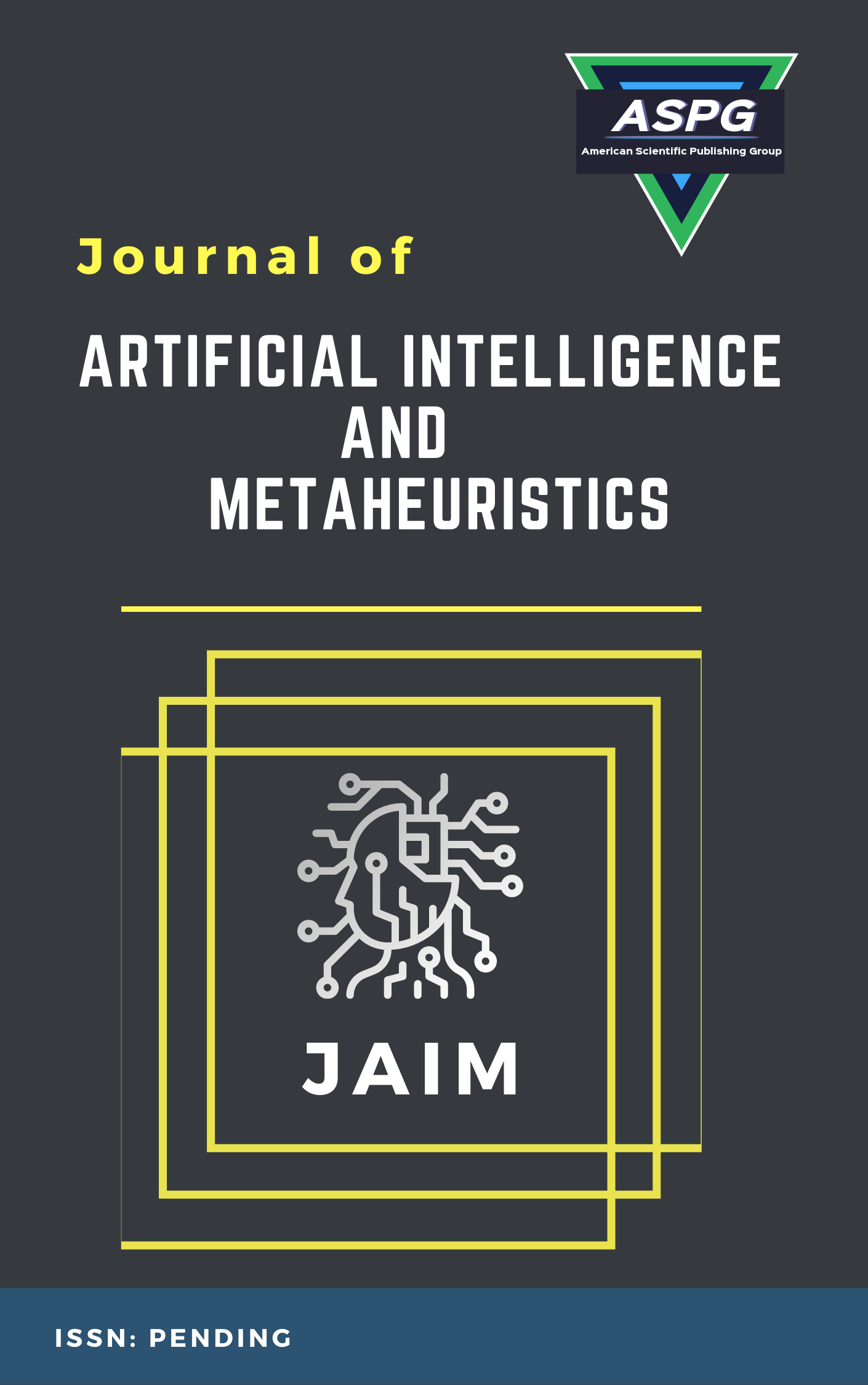

Volume 9 , Issue 1 , PP: 20-33, 2025 | Cite this article as | XML | Html | PDF | Full Length Article
Safa S. Abdul-Jabbar 1 * , Alaa k. Farhan 2 , Abdul Hafeez Kandhro 3
Doi: https://doi.org/10.54216/JAIM.090103
The utilization of artificial intelligence (AI) algorithms has significantly transformed the field of blood disease diagnosis, enabling enhanced capabilities in prediction, categorization, and optimization. However, there is still a lack of research exploring the advancement of hybrid machine learning models that combine qualitative and quantitative datasets to address issues associated with blood diseases. To tackle this gap, we evaluate algorithmic combinations using datasets that include key characteristics from complete blood count (CBC) examinations. This manuscript presents an evaluation of prominent deep learning models, such as CNN, RNN, and RCNN, as part of our methodology. The assessment identified XGBoost as the optimal machine learning algorithm, and RCNN as the best deep learning model. Consequently, we propose a hybrid model named ‘RCNNX,’ which integrates Robust Scaler, SelectKBest feature selection, RCNN, and the XGBoost algorithm. The hybrid model, ‘RCNNX,’ achieves exceptional testing accuracy levels of 100% and 95.12% on the Anemia Diagnosis Dataset and a second dataset, respectively. Additionally, it demonstrates recall rates of 100% and 94.64% for the same datasets. These findings highlight the superiority of the proposed model, as it effectively utilizes feature selection to reduce the number of input variables, minimizing the risk of overfitting. Moreover, XGBoost enhances the predictive accuracy of RCNN.
Complete Blood Cell Count , CBC Test Parameters , Machine Learning Algorithms , Anemia Classifications , Blood Diseases Prediction.
[1] I.H. Sarker. Deep learning: A comprehensive overview on techniques, taxonomy, applications and research directions. SN Computer Science, 2(6):1–20, 2021.
[2] L.R. Al-Khazraji, A.R. Abbas, and A.S. Jamil. Generating various deep dream images through maximizing the loss function of particular layers using inception-v3 and inception-resnet-v2 models. Iraqi Journal of Science, pages 3468–3483, 2024.
[3] S. Shahane. Anemia diagnosis dataset. Kaggle, 2020.
[4] L.R. Al-Khazraji, A.R. Abbas, A.S. Jamil, and A.J. Hussain. A hybrid artistic model using deep-dream model and multiple convolutional neural networks architectures. IEEE Access, 2023.
[5] E. Stevens, L. Antiga, and T. Viehmann. Deep learning with PyTorch. 2020.
[6] R.-Y. Sun. Optimization for deep learning: An overview. Journal of Operations Research Society of China, 8(2):249–294, 2020.
[7] S. Suner, J. Rayner, I.U. Ozturan, G. Hogan, C.P. Meehan, A.B. Chambers, J. Baird, and G.D. Jay. Prediction of anemia and estimation of hemoglobin concentration using a smartphone camera. PLoS One, 16:e0253495, 2021.
[8] R. Vohra, A. Hussain, A. Dudyala, J. Pahareeya, and W. Khan. Multi-class classification algorithms for the diagnosis of anemia in an outpatient clinical setting. PLoS One, 17(7):1–18, 2022.
[9] J. Wang, Y. Yang, J. Mao, Z. Huang, C. Huang, and W. Xu. Cnn-rnn: A unified framework for multilabel image classification. In Proceedings of the IEEE Conference on Computer Vision and Pattern Recognition, pages 2285–2294, 2016.
[10] L.R. Ali and A.S. Jamil. Effect of changing targeted layers of the deep dream technique using vgg-16 model. International Journal of Online and Biomedical Engineering, 19(3), 2023.
[11] M. Ahsan, M.A.P. Mahmud, P.K. Saha, K.D. Gupta, and Z. Siddique. Effect of data scaling methods on machine learning algorithms and model performance. Technologies, 9:5–9, 2021.
[12] M.M. Ahsan, S.A. Luna, and Z. Siddique. Machine-learning-based disease diagnosis: A comprehensive review. Healthcare, 10(541):1–30, 2022.
[13] F.K. Alsheref. Blood diseases detection using classical machine learning algorithms. Journal of Biomedical Science and Engineering, 10(7):77–81, 2019.
[14] C. Bent´ejac, A. Cs¨org˝o, and G. Mart´ınez-Mu˜noz. A comparative analysis of xgboost. arXiv preprint, 2019.
[15] N. C¸ olako˘glu and B. Akkaya. Recent advances in data science and business analytics. Mimar Sinan Fine Arts University Publications, 2019.
[16] R. Cui, H. Liu, and C. Zhang. Recurrent convolutional neural networks for continuous sign language recognition by staged optimization. In Proceedings of the IEEE Conference on Computer Vision and Pattern Recognition, pages 7361–7369, 2017.
[17] J. Duchi, E. Hazan, and Y. Singer. Adaptive subgradient methods for online learning and stochastic optimization. Journal of Machine Learning Research, 12(7):2121–2159, 2011.
[18] R.Z. Haider, I.U. Ujjan, N.A. Khan, and E. Urrechaga. Beyond the in-practice cbc: The research cbc parameters-driven machine learning predictive modeling for early differentiation among leukemias. Diagnostics, 12(1):138, 2022.
[19] A.A. Ibrahim, R.L. Ridwan, M.M. Muhammed, R.O. Abdulaziz, and G.A. Saheed. Comparison of the catboost classifier with other machine learning methods. Journal of Intelligent & Fuzzy Systems, 11:1–7, 2020.
[20] M. Jaiswal, A. Srivastava, and T.J. Siddiqui. Machine learning algorithms for anemia disease prediction: Select proceedings of ic3e 2018. In IC3E 2018 Proceedings. Springer, 2019.
[21] A. Jovi´c, K. Brki´c, and N. Bogunovi´c. A review of feature selection methods with applications. In 38th International Convention on Information and Communication Technology, Electronics and Microelectronics (MIPRO), pages 1200–1205, 2015.
[22] A.H. Kandhro, W.S.V. Nuchnoi, and P. Pornlada. New bioinformatics-based discrimination formulas for differentiation of thalassemia traits from iron deficiency anemia. Lab Med, 48(3):230–237, 2017.
[23] D.P. Kingma and J. Ba. Adam: A method for stochastic optimization. arXiv preprint, 2015.
[24] J. Li, H. Zhang, J. Zhao, X. Guo, W. Rihan, and G. Deng. Embedded feature selection and machine learning methods for flash flood susceptibility-mapping in the mainstream. Remote Sensing, 14(21):5523, 2022.
[25] K. Maharana, S. Mondal, and B. Nemade. A review: Data pre-processing and data augmentation techniques. Global Transitions Proceedings, pages 91–99, 2022.
[26] P.O. Pinheiro and R.C. Com. Recurrent convolutional neural networks for scene labeling. In International Conference on Machine Learning (PMLR), pages 82–90, 2014.